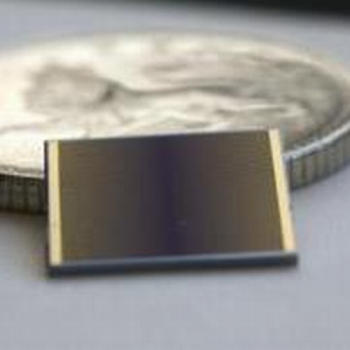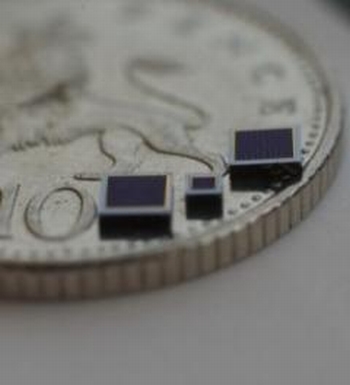
Researchers from Imperial College London are developing the next generation of solar panels to harness the sun to provide clean and affordable electricity. The nano-structured millimeter-sized solar cells capable of converting the sun’s energy to electricity are placed for display under the name “Quantum of Sol” at the Royal Society Summer Science Exhibition 2009.
Solar energy is one of the most sustainable energy sources we have, but until recently, the technology to convert it was relatively inefficient,
says Dr Nicholas Ekins-Daukes from Imperial College London.
We specialize in using nanotechnology to increase the efficiency of solar electricity generation and thereby also reduce the cost.

Technology behind these third generation solar cells
These cells better known as the third generation solar cells made from custom-built materials are smaller than the size of a human hair. The third generation solar cells are way ahead of the existing solar panels as far as capturing the solar energy is concerned. They are so efficient because they contain different layers of materials that absorb a broader spectrum of colors.
To witness this principle in action, visitors will have to slide a working solar cell through light that is split by a prism into its constituent colors, to see how each color generates different amounts of energy. Arranging tiny mirrors and lenses on a board to focus a beam of light onto a minute solar cell, the visitors will also get the opportunity to operate as solar power engineers. This technology is quite similar to the one used in the deserts, the “concentrator power system,” where a sheath of lenses or mirror is used to focus sunlight onto highly efficient minute solar cells. The difference lies in the fact the latter is a high-scale representation of the technology.
Upper hand over the silicon solar panels
Solar energy has long been recognized as a potential alternative to fossil fuels, but the technology was conventionally expensive and inefficient. The transforming scenario constitutes for the change in opinion. Bringing a revolution were the silicon solar panels, which were more efficient and less expensive, but the third generation solar cells will prove to be a benchmark in the field.
Silicon solar panels that came into existence in the 1950s are relatively economical, mislay a great deal of the sun’s energy and are just 12-20% efficient. The new generation solar cells are potentially much better when it comes to performance. The current efficiency count of these solar cells is 41%, which is expected to increase by 10% within a decade.
![]()
Steps toward generating affordable energy
One of the most prevalent challenges the scientists working in the solar power field face is finding ways to harness the solar energy more efficiently. But building the nano-structured millimeter-sized solar cells would cost around $14 per square centimeter, which is a little heavy on the pocket. To deal with this problem, inexpensive mirrors are used by the solar concentrator system to focus and collect sunlight. Therefore, the electricity generated can become affordable.
The Grantham Institute for Climate Change briefing papers launched at the exhibition by Dr. Ned Ekins-Daukes yesterday specifies the international efforts made to make this new generation of solar cells more efficient and affordable.

